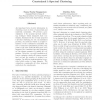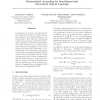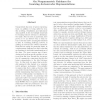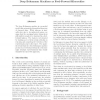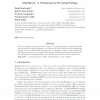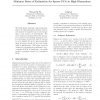JMLR
2012
12 years 9 months ago
2012
An important form of prior information in clustering comes in form of cannot-link and must-link constraints. We present a generalization of the popular spectral clustering techniq...
JMLR
2012
12 years 9 months ago
2012
In this paper we propose a new approach for semi-supervised structured output learning. Our approach uses relaxed labeling on unlabeled data to deal with the combinatorial nature ...
JMLR
2012
12 years 9 months ago
2012
Unsupervised discovery of latent representations, in addition to being useful for density modeling, visualisation and exploratory data analysis, is also increasingly important for...
JMLR
2012
12 years 9 months ago
2012
A challenging problem of multi-label learning is that both the label space and the model complexity will grow rapidly with the increase in the number of labels, and thus makes the...
JMLR
2012
12 years 9 months ago
2012
The Fukushima Daiichi disaster 11 March, 2011 is considered the largest nuclear accident since the 1986 Chernobyl disaster and has been rated at level 7 on the International Nucle...
107
click to vote
JMLR
2012
12 years 9 months ago
2012
The deep Boltzmann machine is a powerful model that extracts the hierarchical structure of observed data. While inference is typically slow due to its undirected nature, we argue ...
JMLR
2012
12 years 9 months ago
2012
JMLR
2012
12 years 9 months ago
2012
Motivated by the observation that coarse and fine resolutions of an image reveal different structures in the underlying visual phenomenon, we present a model based on the Deep B...
JMLR
2012
12 years 9 months ago
2012
We study sparse principal components analysis in the high-dimensional setting, where p (the number of variables) can be much larger than n (the number of observations). We prove o...
JMLR
2012
12 years 9 months ago
2012
We study the prevalent problem when a test distribution differs from the training distribution. We consider a setting where our training set consists of a small number of sample d...
